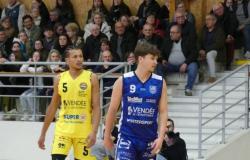
This Thursday, Michel Barnier must close the Congress of Mayors with a highly anticipated speech in the context of the efforts requested from local authorities.
Bruno Bernard takes the opportunity to be exasperated by the situation in an interview with Paris-Match. The environmentalist president of the Metropolis of Lyon regrets that his community is the most affected in France, with 96 million euros less in revenue.
For Bruno Bernard, it is all the more unfair as he has already reduced the size since his election: “It’s anecdotal but I eliminated three positions of ushers who were in front of the office opening the door of the president of the metropolis. I eliminated half of the fleet of drivers for the vice-presidents and management, the official restaurant, redeployed 800 positions to support our new policies with existing ones..
He estimates that he has around 775 million euros in flexible annual spending in the Metropolis and from which up to 40% will have to be cut. “These are aid to associations, the maintenance of public space… We are in the process of arbitrating but I hope we will not go that far”warns Bruno Bernard.
According to the most powerful ecologist in France, “we also need to increase revenue”. “We want to reinstate the CVAE (Contribution on the added value of companies), it's immediately extra money and the companies didn't even realize that it had been removed, I'm told At my house”he continues. “If we don’t want to increase revenues and reduce expenses, those of communities in particular, it won’t work”concludes Bruno Bernard.
X
France





